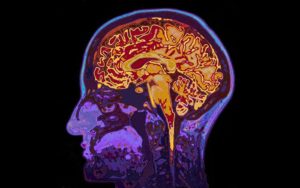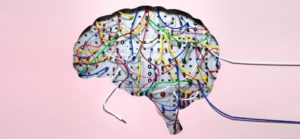A trap for those suffering from depression and anxiety is that many of people’s natural coping reactions make the problem worse rather than better. Here are a few examples of that, and some practical solutions.
Note: Please be compassionate with yourself if you can relate to any of these patterns. They’re common pitfalls, not an indictment on you as a person.
Number 1: You don’t fix problems that frustrate you.
Feeling irritable is one of the main symptoms of depression for many people. Some problems that trigger repeated irritation and frustration are easily fixable. However, people with depression often go into a passive “survival” mode and don’t address these issues, even though they could.
For example, you don’t have enough power outlets in the spot where everyone in your household likes to charge their devices. You’re constantly annoyed about people unplugging your device in favor of their own. This is the type of tension that can be solved by getting a multi-plug or another similar practical solution.
People with depression often just put up with this type of issue (and complain about it), rather than deploying a solution. It’s understandable to do this, but not very helpful.
Number 2: You’re waiting for your sleep to improve before you take other actions.
Difficulty sleeping is one of the most horrible symptoms of depression. Unfortunately, it’s often the last symptom to resolve when people’s mood starts to improve. Therefore, even though it’s hard, it is important that you start other strategies even though you’re feeling tired and grumpy. For example, exercise. If you over-focus on getting your sleep right before you start other strategies, you’re setting yourself up to fail.
Number 3: Wanting a pill as a cure-all.
Medication is helpful for many people with depression but it certainly doesn’t address all of the thinking and behavioral patterns that are associated with depression. For example, you’ll likely still need psychological strategies to deal with tendencies towards rumination (overthinking) and avoidance/procrastination.
Solution: Try drawing a pie chart and estimating what role you think medication has in your depression recovery. Include whatever is relevant to you in your pie chart, such as thinking changes, exercise, meditation, laughter, problem-solving etc. Your personal pie chart won’t be the same as someone else’s since everyone’s preferred mix of strategies for depression recovery is a little bit different. When you start adding all these other components to your pie chart, you’ll see that medication is only a part of the picture.
Number 4: Asking for help too often.
People with depression frequently struggle along on their own for far too long before seeking effective help, and may not realize they’re depressed. However, sometimes people can become over-reliant on others when their mood is low. Examples include too frequently asking for help with: making decisions, using technology, or reaching out socially (such as making phone calls).
The same person can be too resistant to seeking help in some respects and too reliant on others in other respects!
When someone who is depressed constantly leans on others it can create anger, resentment, and other problems in relationships. This is especially the case when the depressed person repeatedly asks the same people for help or asks for help with the same task that they could learn to do themselves.
This point relates to the next one, so keep reading to learn more.
Number 5: Putting life, learning, and projects completely on hold.
People often feel like their brain is foggy and their concentration is impaired when they’re depressed. Therefore, it’s natural that people withdraw and think they’ll put off working on projects or learning anything new until they’re feeling better.
When you’re depressed, it’s a great idea to go easy on yourself and resist taking on too much. This does not mean putting off anything and everything challenging or unfamiliar. If you do this, you’ll, unfortunately, dig yourself into a very big hole, where you withdraw from life and avoid, and your confidence and energy erode further.
Don’t push yourself too hard, but understand that experiences of both pleasure and mastery are incredibly important for mood hygiene and depression recovery.
Solution: For this tip, I like to think of each day in three chunks – morning, afternoon, and evening. Aim to have one experience of pleasure and one experience of mastery in each of these chunks. These can be tiny, like canceling a subscription you’ve been paying for but not using.
You can actually fold other advice for alleviating depression into this strategy. For example, exercise could be either a pleasure or mastery experience for you or both. Something like taking the stairs rather than the elevator could be counted.
If you include mastery experiences in your day, you’re not likely to fall into the traps of asking for help too much or failing to solve easily fixable problems that trigger your irritability.
Wrapping Up
Which of these problems seems most relevant to you or your loved one? Which of the solutions presented seems most important for you to try? How can you implement that in the easiest way possible? How can you bypass the most likely obstacle to your succeeding with your strategy?
By Alice Boyes, Ph.D. Alice has had her research about couples published in leading international journals, including Journal of Personality and Social Psychology.Her work focuses on how people can use tips from social, clinical and positive psychology research in their everyday lives and romantic relationships. She is regularly interviewed for magazines and radio about a wide range of social, clinical, positive, and relationships psychology topics. She can be contacted for media interviews by emailing admin@aliceboyes.com






























